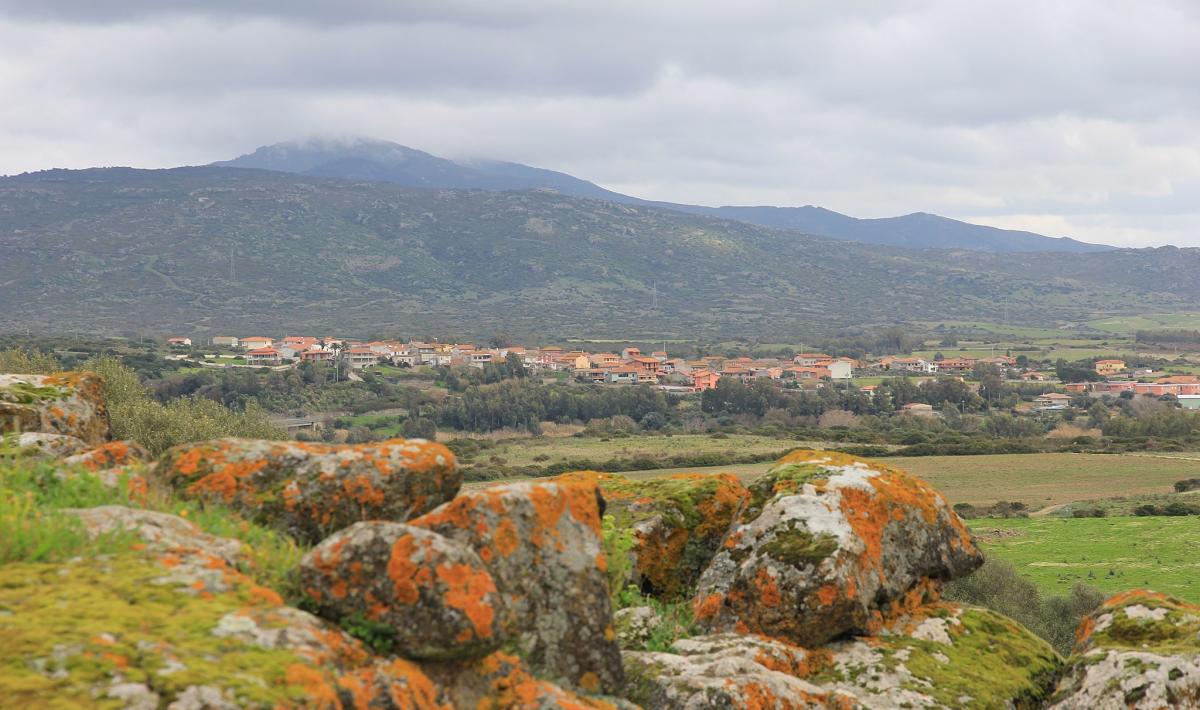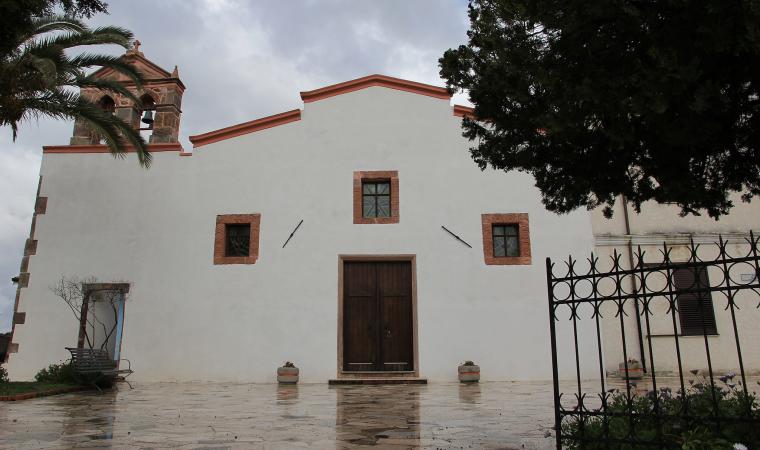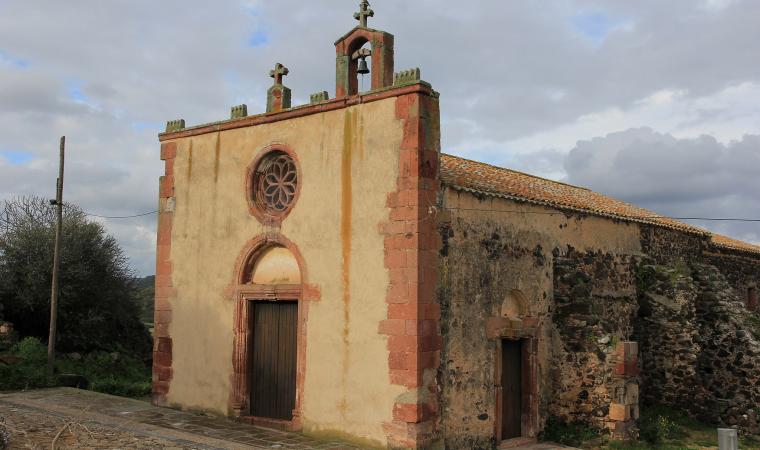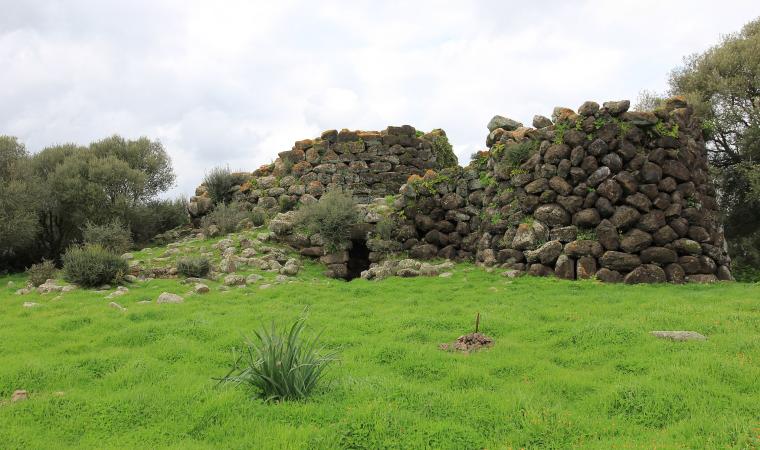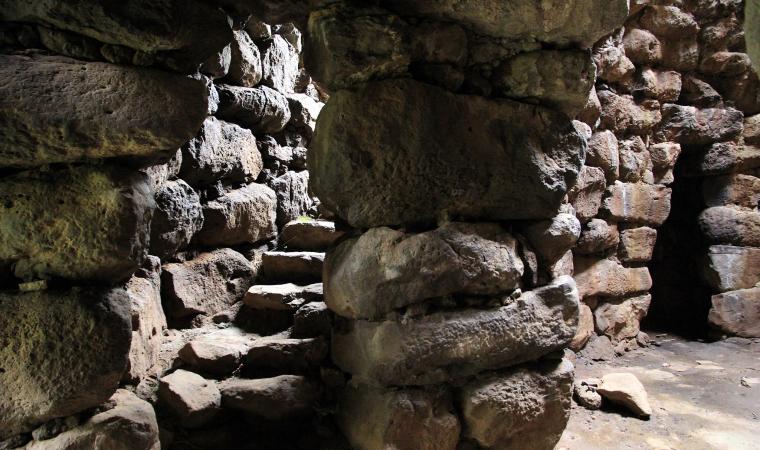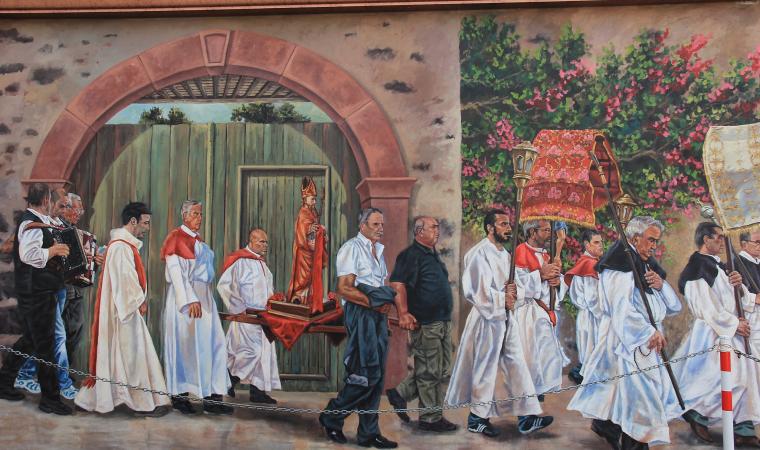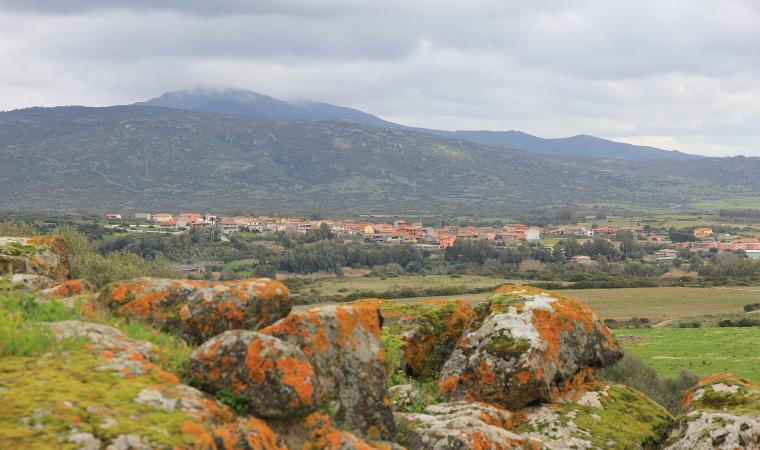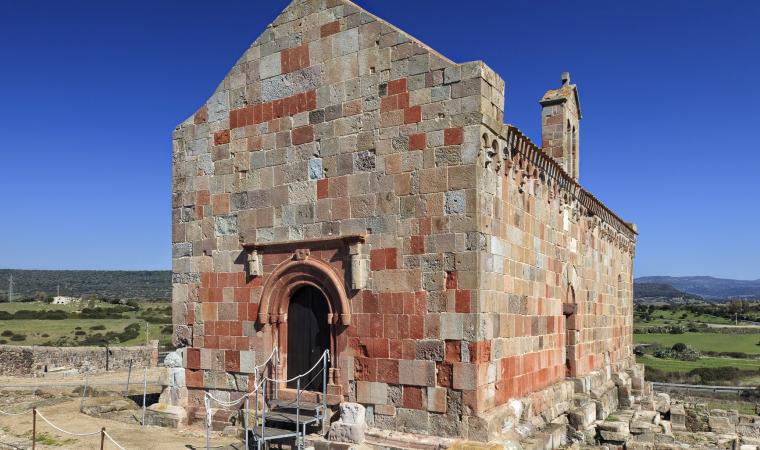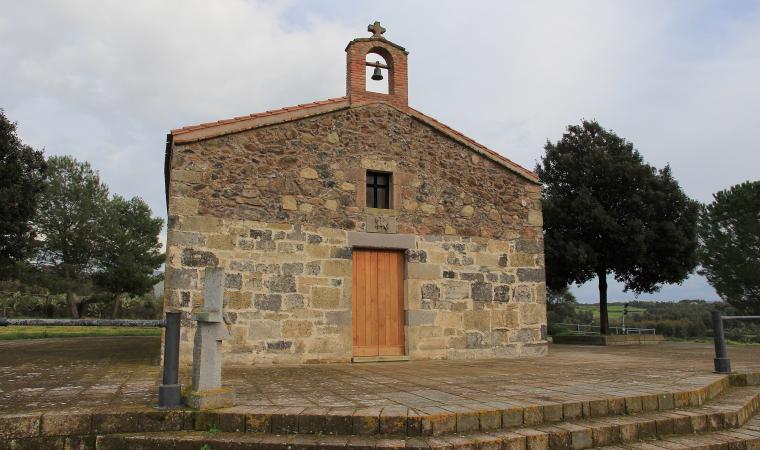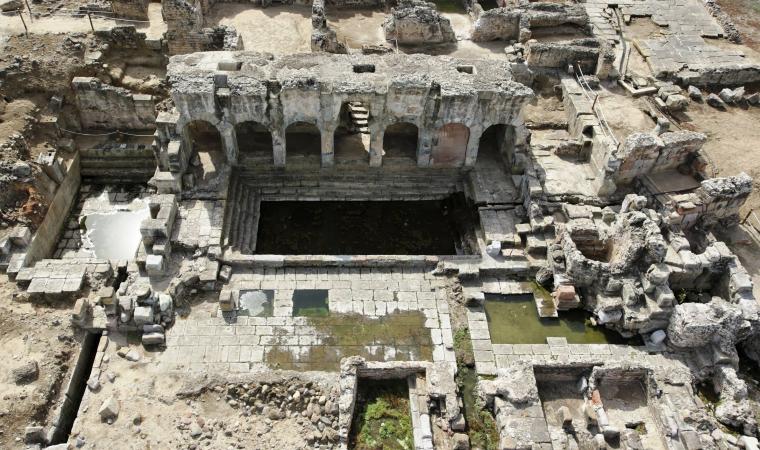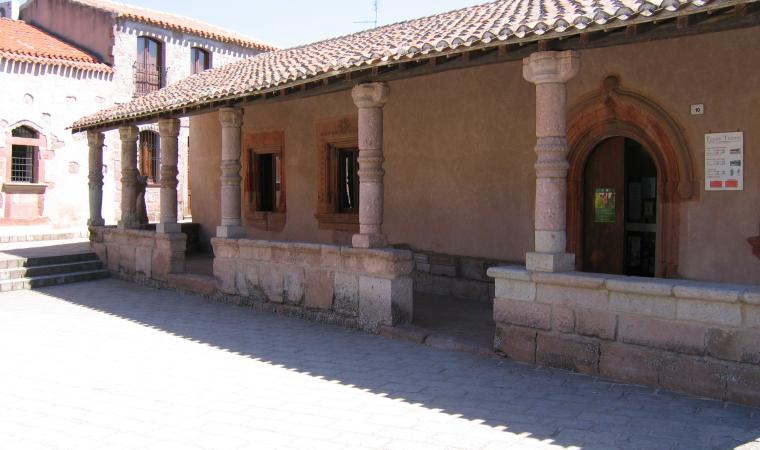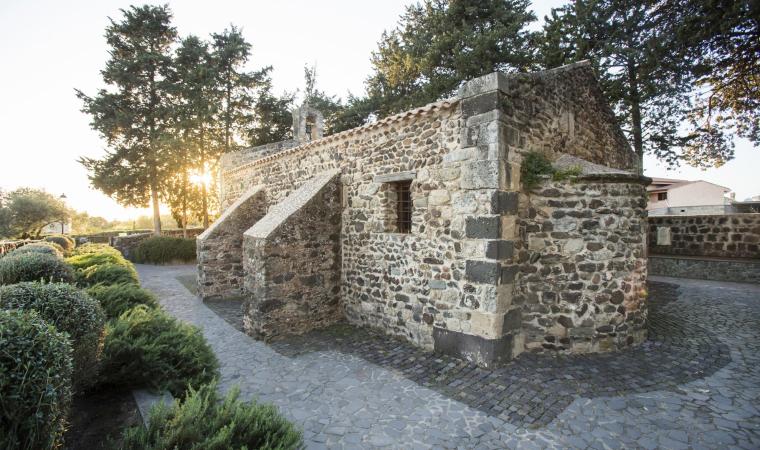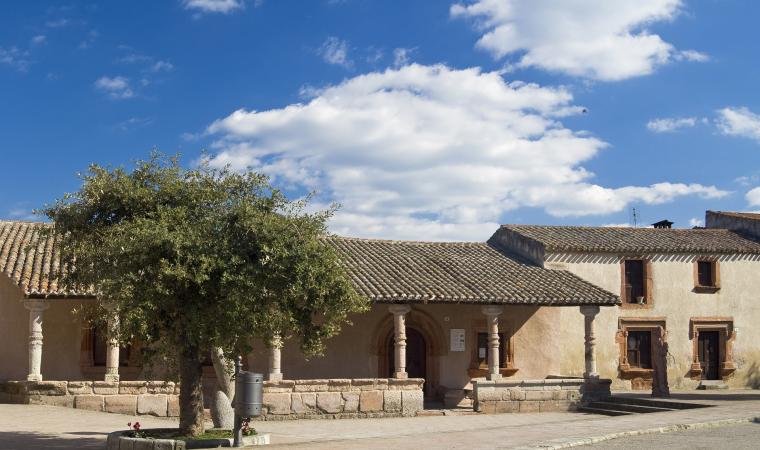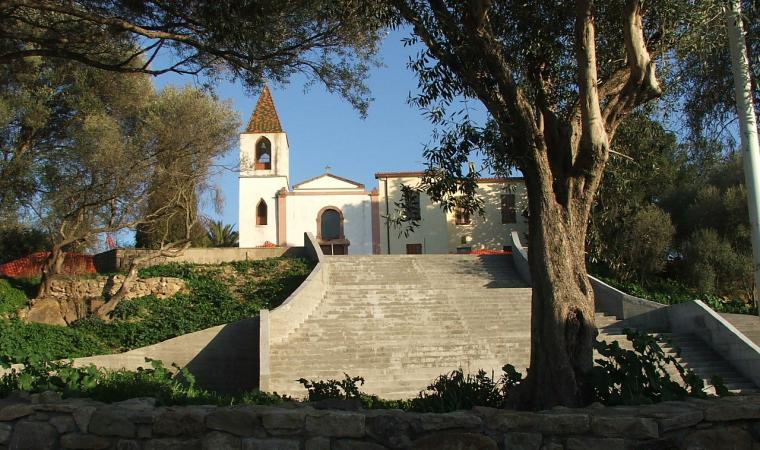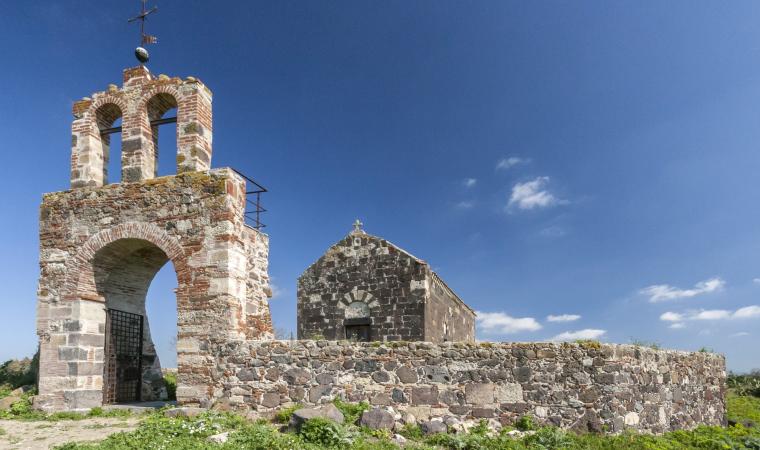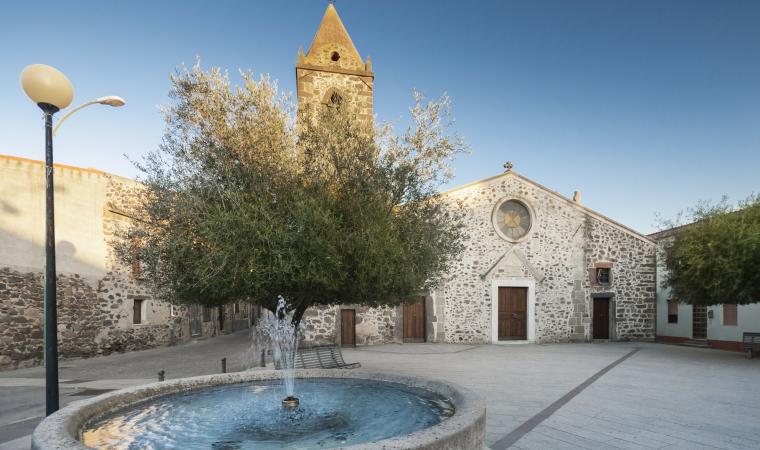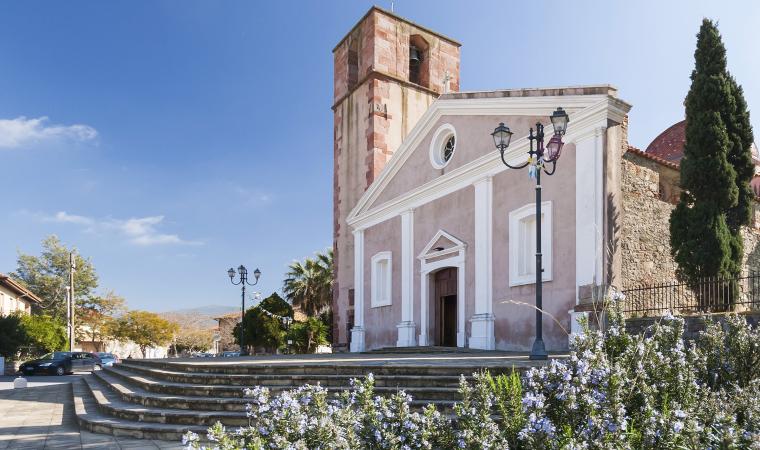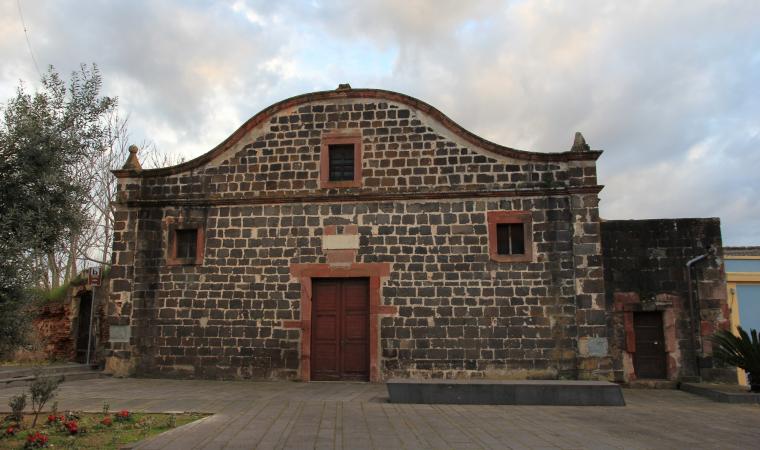The name derives from Etruscula, a village founded perhaps in the times of the Roman Republic, or more likely from truiscu, 'mountain pepper', a herbaceous plant that thrived in the hills surrounding the village, used to clean donkeys and horses. Villanova Truschedu, the setting of the Flavio Soriga's novel 'Sardinia Blues', is a characteristic village with 300 inhabitants lying in the hinterland of Oristano in the territory of Barigadu, on the banks of the river Tirso. The historic town of this charming and welcoming village, structured around the parish church of Sant’Andrea Apostolo, is known as Ruinas, indicating the ruins of a Roman village, located along the road that connected Forum Traiani to the Campidano plain, playing a strategic economic and military role. The most fascinating place of worship is the late-Romanesque Sanctuary di san Gemiliano, characterised by the muristenes or cumbessias, small houses used by the faithful during the novenas for the saint celebrated in September, whilst the patron Sant'Andrea, is celebrated in late November.
The area has a very high density of Nuragic structures, with it being possible to visit the complexes of San Gemiliano, Dominigu Porru, Zoppianu and, above all, next to the Santuario di San Gemiliano, the majestic Nuraghe di Santa Barbara, a complex structure with main tower and additional body, which contains a courtyard and a secondary tower. With a base of almost seven metres in diameter, the chamber of the main tower is one of the largest on the island, whilst the chamber of the secondary structure is surrounded by a series of openings. Both have a tholos (false dome) roof that is almost intact. The Nuraghe is surrounded by a settlement that lasted throughout the Roman and then medieval times, its name evoking the existence of a sanctuary from Byzantine or subsequent times. The Nuragic settlement consisted of multi-chamber huts with rooms of different shapes and with differing functions, arranged around open courtyards and other structures. The settlement is bordered by a wall built with large blocks, perhaps for defensive purposes, enclosing an area of almost one hectare, estimated to have housed about 150 inhabitants. Next to the south-western side are quadrangular rooms built with smaller stones or with blocks made from almost-overlapping Nuragic structures, being Roman and early Medieval buildings. In the exhibition hall inside the complex of the Nuraghe Losa in Abbasanta, finds discovered during excavations are on display.

